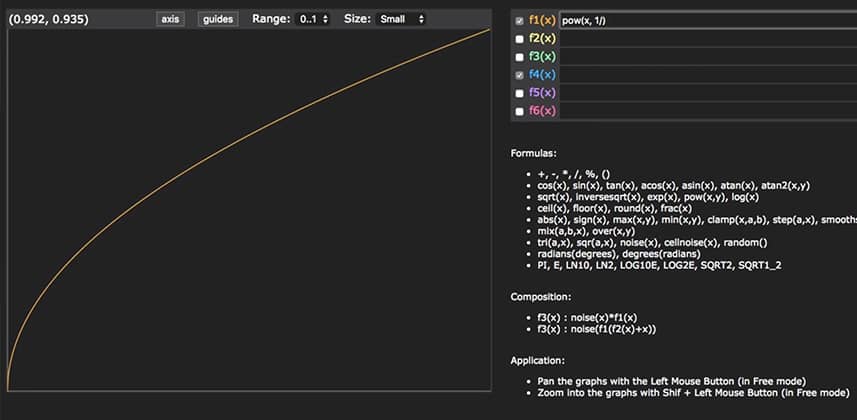| Series |
|---|
Day 15: 24 Insights in 24 Days – 2018 New Year Marathon
Thoughtful Insights You Need To Know About (but aren’t on Mixing Light)
As a co-founder of Mixing Light, there’s a thought I often have (and don’t have a great answer): How much time should I spend evaluating tutorials from other websites? Or to put it more concretely, should I study training from our competitors and search Vimeo and YouTube to keep an eye on what’s being said elsewhere on the web?
At first, you might think the obvious answer is Yes.
After all, we might find great talent and bring them onto Mixing Light. Or we may find alternate approaches to teaching our material that would enhance the Mixing Light experience. But there is a dark side to constantly keeping extra-close tabs on ‘the competition’.
We start being influenced… and then we start imitating. Rather than forcing ourselves to come up with our own new ideas, we just start incorporating the ideas of others… losing our own voice and vision in the process. So – for the most part, we keep tabs on what’s going on in the teaching of color grading concepts on the web but we don’t ‘study’ the products of our competitors. And this includes, spending very little time on free services like You Tube.
Keeping Tabs By Sharing Via The Tao Newsletter
For myself (I can’t speak for Dan or Robbie), the way I keep tabs on the rest of the internet (as it relates to color grading) is by publishing the Tao Colorist Newsletter. 45 weeks a year I’m scouring a rather long RSS feed for the latest in color grading craftsmanship, tutorials, news, and commentary. The best of those feeds make it into the Newsletter. My Managing Editor Jim Wicks has his own feeds and pulls items I miss. Finally, readers to that Newsletter regularly feed Jim and me with stories worth sharing.
Until recently, I’ve never felt the need to do a specific Mixing Light Insight based on stories I’ve pulled for the Newsletter. Why?
#1 – It’s a cheat. My job here at Mixing Light is to come up with original content. If you want to read what others are saying then sign up for the newsletter (at the link above).
#2 – When it comes to the type of content we put here on the Insights Color Library… well, the reason we started Mixing Light is because we couldn’t find this content anywhere else. At least, not published on a regular schedule. And not in a way where you could be sure the author was experienced enough to be trusted. Even today, 5 years later, there’s very little content ‘elsewhere on the web’ that we could put in here as an Insight that isn’t already being dealt with on this website.
But recently – I’ve noticed a change when it comes to ‘insights from elsewhere’ you should know about.
Three Insights Worth Sharing
In this Insight, I’m pointing you to three legit Insights from elsewhere on the web. If you follow LiftGammaGain or the DaVinci Resolve Users Facebook page then maybe you’ve seen them. But maybe not. And you should.
Of course – I offer my own commentary about each: I let you know what I think is so special about each. If I think they have flaws, I also let you know.
Let’s discuss in the comments.
Use the comments below to discuss these three items. I’m not sure how often I’ll do this ‘elsewhere on the web’. So at this point, I’m not making it a series. It’s tough to predict what the web will give us – so who knows how long it’ll be before I find three insights simultaneously worth sharing (but there’s always the Newsletter if you like ‘web roundups’ delivered to your Inbox).
Insight #1a & #1b: Deconstructing the Math in FCPX 10.4
Mixing Light Member-At-Large and Contributor Christophe Delaunay recently did an evaluation of the new color tools in FCPX 10.4. He discovered that the Color Wheels don’t behave like traditional RGB color wheels. Specifically, adjust the Midtone control drastically effects white- and black- points. He’s not the only one who discovered this behavior and was troubled by it.
Editor-turned-software-developer Simon Ubsdell (who helped create the Hawaiki Keyer) also noticed the FCPX 10.4 color wheels behaving differently from most other modern color wheels. He recently released two unique videos on YouTube. They are unique because they focus on the math of color correction. He first focuses on the equations of Lift Gamma Gain (which are really quite simple) – and he does it by using math software that generates a graph that looks precisely like a waveform of a grayscale image.
After watching these two videos it’s not exactly clear how you – doing color correction – can make precise use of this information. But I found them fascinating at a different, more cerebral level – hence me sharing them with you, here.
Member Content
Sorry... the rest of this content is for members only. You'll need to login or Join Now to continue (we hope you do!).
Need more information about our memberships? Click to learn more.
Membership optionsMember Login



